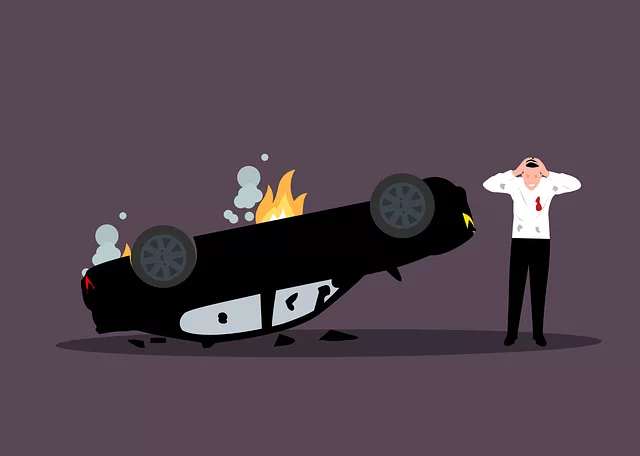In Manhattan, cyclists have specific legal rights and protections, including full lane occupancy privileges, the ability to make left turns like cars, and adherence to traffic signals. Key regulations involve priority at intersections, yielding to pedestrians in marked crosswalks, and following standard traffic rules. Understanding these laws is crucial for safety and accident prevention, especially when dealing with serious injuries like brain injuries, for which a trusted brain injury law firm in Staten Island can provide assistance. In Manhattan's dense urban environment, knowledge of local laws, such as helmet use and bike lighting requirements, is essential for safe cycling. Adhering to right-of-way rules and taking proactive safety measures can help prevent accidents and mitigate risks of brain injuries. After an accident, seeking immediate medical attention and collecting evidence are vital steps, followed by consulting a brain injury law firm in Staten Island for legal protection and assistance.
In the bustling urban landscape of Manhattan, cyclists face unique challenges navigating crowded streets and complex traffic laws. This comprehensive guide, “Cyclist Right of Way Manhattan,” explores the legal framework surrounding cyclist rights in New York State and City, delving into right-of-way rules, common scenarios, and safety tips. Understanding these regulations is crucial for both seasoned riders and newcomers to ensure a safe and enjoyable experience. Additionally, learn what steps to take after an accident, with insights from a trusted brain injury law firm in Staten Island.
- Understanding Cyclist Rights in Manhattan: A Comprehensive Guide
- The Legal Framework: New York State and City Laws for Cyclists
- Right of Way Rules: When Bicyclists Have the Priority
- Common Scenarios: Navigating Urban Streets as a Cyclist
- Protecting Yourself: Safety Tips for Cyclists in Manhattan
- What to Do After an Accident: A Guide from a Brain Injury Law Firm Staten Island
Understanding Cyclist Rights in Manhattan: A Comprehensive Guide

In Manhattan, cyclists have specific rights and protections under the law. It’s crucial for both riders and motorists to be aware of these regulations to ensure safe navigation on the city’s bustling streets. Cyclists are considered vehicles and have the same rights as car drivers, including the right to occupy a full lane when necessary. They can make left turns like any other vehicle and should follow traffic signals and stop signs. Understanding these basics is essential for preventing accidents and advocating for your rights, especially in cases involving serious injuries, such as those that might lead to brain injuries—a concern that prompts many to turn to a brain injury law firm Staten Island residents trust.
Navigating the city as a cyclist also involves recognizing when you have priority at intersections or when passing through certain zones. For instance, cyclists often have the right of way in bike lanes and when approaching crosswalks simultaneously with vehicles. However, they must yield to pedestrians within marked crosswalks. Being informed about these rules can help reduce conflicts and promote a more harmonious sharing of roads, especially considering the growing popularity of cycling for both commuting and leisure in Manhattan.
The Legal Framework: New York State and City Laws for Cyclists

In New York, cyclists have specific rights and responsibilities as outlined by both state and city laws. The rules are designed to promote safety and protect both cyclists and drivers alike. According to New York State Law, bicyclists have the same rights and duties as vehicle operators, meaning they must follow traffic signs and signals. Cyclists are also required to ride on the right side of the road, unless they’re overtaking another vehicle or preparing for a left turn.
Manhattan’s unique urban landscape requires cyclists to navigate through heavy traffic and complex intersections. It’s crucial for cyclists to be aware of local laws, including those related to helmet use and bike lighting requirements, especially during low-light conditions. In case of accidents involving cyclists, it’s essential to consult with a brain injury law firm Staten Island has to offer, as these incidents can lead to severe injuries and complex legal scenarios. Understanding the legal framework ensures that both cyclists and drivers are held accountable for their actions, fostering a safer environment for everyone on the roads.
Right of Way Rules: When Bicyclists Have the Priority

In Manhattan, understanding the right of way rules is crucial for both cyclists and drivers to ensure safe streets. When it comes to intersections, bicyclists often have the priority over motor vehicles. This means that if a cyclist is approaching an intersection or crosswalk where there are no stop signs or traffic lights, they have the legal right to proceed without stopping, as long as they yield to pedestrians. This rule encourages a more fluid and efficient flow of traffic, benefitting all road users.
For instance, in scenarios where a bike lane aligns with a vehicle lane at an intersection, cyclists are permitted to keep riding straight or turn left, while drivers must yield and allow them to do so. Additionally, bicyclists have the right of way on one-way streets, except when specifically restricted by signs or signals. Remember, these rules are in place for everyone’s safety, and adhering to them can help reduce the risk of accidents, especially considering the vulnerability of cyclists compared to motor vehicle occupants, which includes potential clients seeking a brain injury law firm Staten Island residents trust.
Common Scenarios: Navigating Urban Streets as a Cyclist

Navigating urban streets as a cyclist in Manhattan can be both exhilarating and challenging, especially with the city’s bustling traffic and complex network of roads. Common scenarios for cyclists include merging into traffic, making turns, and navigating through intersections. It’s crucial to understand right-of-way rules to ensure safe rides and protect against potential brain injury risks.
In many cases, cyclists have specific rights when sharing the road with motor vehicles. For instance, they may have the right to take the entire lane when passing obstacles or making left turns. Cyclists should also be visible to drivers by using lights and reflective gear, especially during low-light conditions. Awareness of local laws and regulations, such as those enforced by a brain injury law firm in Staten Island, can empower cyclists to advocate for their safety on Manhattan’s streets.
Protecting Yourself: Safety Tips for Cyclists in Manhattan

Cycling in Manhattan can be an exhilarating experience, but it’s essential to prioritize safety to protect yourself from potential risks. With heavy traffic and bustling city life, cyclists must navigate carefully to avoid accidents. One of the most severe consequences of a cycling accident is the risk of brain injuries, which can have lifelong impacts.
To safeguard yourself, wear a properly fitted helmet at all times—it’s your best defense against head injuries. Stay alert and aware of your surroundings; use hand signals when changing lanes or turning to communicate with other drivers. Obey traffic signals and stop signs, and be predictable in your movements. Consider investing in reflective clothing and gear, especially during early morning or nighttime rides, to increase visibility. Additionally, familiarize yourself with local cycling laws and rights-of-way regulations, such as those regarding bike lanes and intersections. Remember, proactive safety measures can significantly reduce the risk of accidents and potential brain injuries, so always prioritize your well-being while cycling in Manhattan.
What to Do After an Accident: A Guide from a Brain Injury Law Firm Staten Island

After a cycling accident, especially if it results in a brain injury, immediate and proper actions can significantly impact your legal case and recovery. A brain injury law firm Staten Island recommends taking these crucial steps to protect yourself and your rights:
1. Seek medical attention immediately. Even if you feel minor discomfort or confusion, it’s essential to have a thorough check-up. This step is vital for documenting your injuries and establishing a clear medical record that can support your case. Make sure to inform the healthcare provider about how the accident occurred and any symptoms you’re experiencing.
2. Collect evidence from the scene. If possible, take photos of the location, including any visible damage to your bike or road conditions that might have contributed to the accident. Note down details like the time, date, and exact spot of the incident. These facts can help establish liability and strengthen your claim against responsible parties, which could include drivers, property owners, or local authorities.
Cyclists navigating Manhattan’s urban landscape have both rights and responsibilities. By understanding the legal framework, including New York State and City laws, cyclists can confidently assert their right of way and prioritize safety. Following established rules and staying alert in common scenarios ensures a smoother ride. In case of an accident, remembering key steps recommended by a brain injury law firm Staten Island can be invaluable, ensuring proper handling and potential compensation for any injuries suffered.
